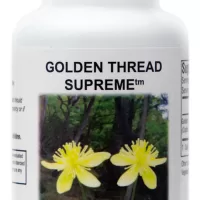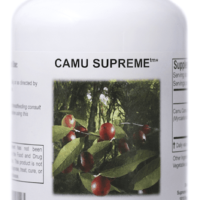Pain is no stranger if you’re living with calcific tendonitis in your shoulder. While we aren’t sure why some people develop this condition, it is known that people between the ages of 40 and 60 are at greater risk. Factors like age, wear and tear and overuse likely contribute to a person’s chances of developing calcific tendonitis. Signs that you have calcific tendonitis include:
- Sudden, sharp shoulder pain.
- Sudden shoulder stiffness.
- Reduced range of motion in the shoulder.
- Tenderness of the rotator cuff.
Many people find that calcific tendonitis “flares up” at night. While pain does often worsen during sleep to the point of waking people up, it’s also very common to experience calcific tendonitis symptoms all throughout the day. Many people wonder if there’s a way to get lasting relief from calcific tendonitis without surgery. The answer is that there is! Here at AZMulticare, we’ve seen countless patients have success with going about their lives free of pain after getting a calcific tendonitis diagnosis using shockwave therapy. Shockwave therapy is a non-invasive, painless treatment that promotes rapid healing at the site of an injury. Dr. Robinson has been helping patients with musculoskeletal injuries for nearly 20 years! Let us help you find the right option for shockwave therapy for calcific tendonitis in Scottsdale, Arizona.
Fast Facts on Shockwave Therapy for Calcific Tendonitis
According to a clinical study looking at shockwave therapy for calcific tendonitis of the shoulder, shockwave therapy is a safe and effective noninvasive treatment for patients with calcific tendonitis of the shoulder. This study also showed the long-term benefits of shockwave therapy for people with shoulder pain. Following successful treatments that eliminated pain symptoms, patients in this study did not have recurrences of calcium deposits when they were visited two years after the conclusion of shockwave treatments. This study is just one of many demonstrating the lasting and significant benefits for people struggling with pain and reduced mobility due to calcific tendonitis.
Many patients who are investigating shockwave therapy to treat shoulder pain want to know how quickly they can expect to see results. Most patients will actually “feel better” after the first session. However, a treatment approach almost always includes several treatment sessions spread out over several weeks to produce lasting results. In a 2016 study, researchers observed that significant pain reduction with noticeable improvement in shoulder function could be observed in four weeks without any adverse effects. This is very much in keeping with what we see with patients at our office.
How Does Shockwave Therapy for Calcific Tendonitis Work?
Shockwave therapy uses electric waves to deliver tiny pulsations at the direct site of your pain. These pulsations are creating “microtraumas” that send signals to your cells to begin reparative work. This starts with increased blood flow to the area that increases oxygen levels. Next, cellular production ramps up to bring “new” tissue to the area.
Many people are disappointed to hear that surgery is the only option that will help them to get relief from the pain and restrictions that often accompany calcific tendonitis. In reality, shockwave therapy helps many people to avoid the need for invasive surgery that comes with a long recovery time. What’s more, the risk for complications following surgery can sometimes make the solution worse than the problem.
What to Expect When You Have Shockwave Therapy to Treat Calcific Tendonitis
When you book your consultation to discuss your shoulder pain with us here at AZMulticare, we’ll evaluate you to confirm that the source of your pain is calcific tendonitis. We’ll then work with you to create a holistic plan for reversing the effects of this condition. Shockwave therapy is a treatment that is appropriate for most people. Additionally, you may benefit from manual adjustments, stretches, and exercises. Our team can also help you to avoid future strain and injuries by reviewing things like posture, lifting habits, and lifestyle.
When you begin shockwave therapy at our office, we’ll create a relaxing and comfortable environment for you. Shockwave therapy is a painless treatment that does not require any downtime. You may experience some slight discomfort when the shockwave machine is applied to your skin. Many patients appreciate that shockwave therapy is a targeted treatment that only involves the direct area where the injury is located. While you can jump right back into life following your session, we will provide you with some information on avoiding tasks like heavy lifting, endurance activities, and vigorous exercises involving the shoulder in the 24 to 48 hours following your shockwave treatment. We’re excited to show you that it’s possible to stimulate natural healing of your shoulder if you’re living with pain and stiffness caused by calcific tendonitis! Our team is here to answer all the questions you have about shockwave treatment.
Frequently Asked Questions About Shockwave Therapy for Calcific Tendonitis
How Many Sessions Does It Take to Treat Calcific Tendonitis With Shockwave Therapy?
While each patient is different, many patients get the best results using three to six sessions spread out over several weeks.
What Is the Most Common Sign of Calcific Tendonitis?
The most common sign is sudden shoulder pain that seems to come out of nowhere. The pain is sometimes accompanied by a loss of range of motion in the shoulder.
How Is Calcific Tendonitis Diagnosed?
Ultrasound can be the best way for many patients to verify the presence of calcification within the tendons.





